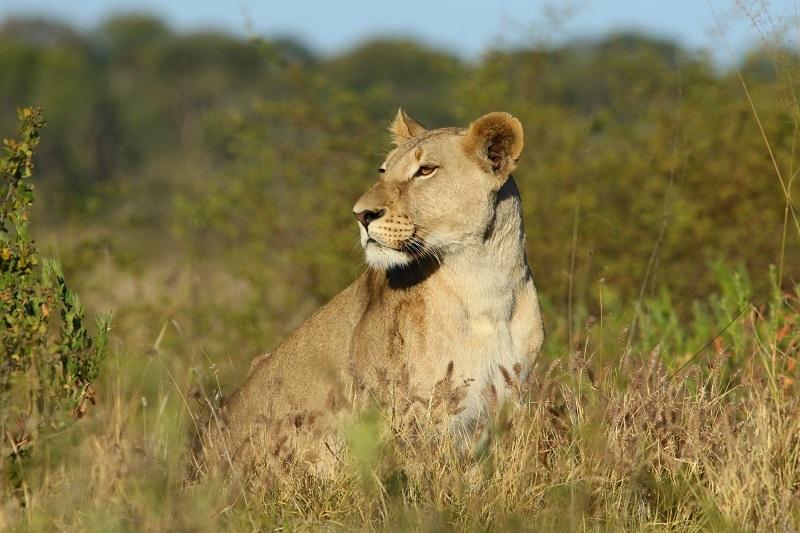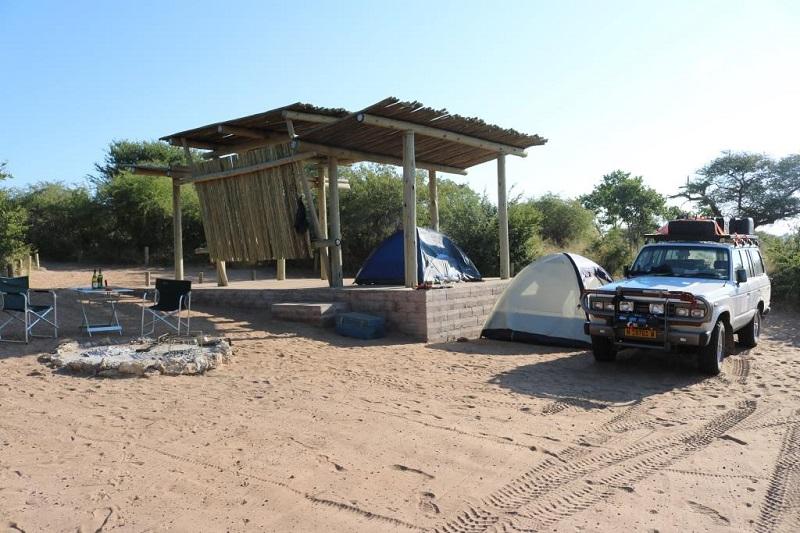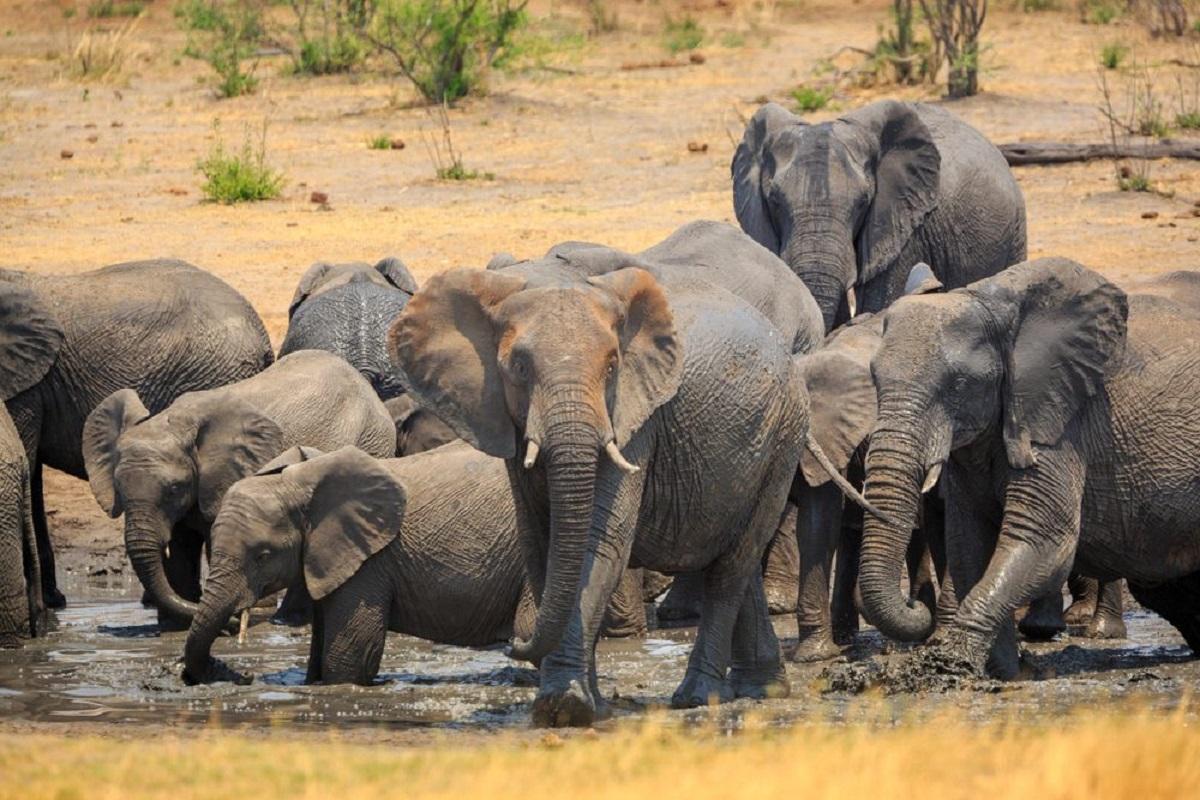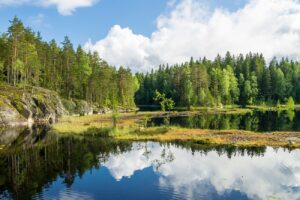Tucked away in north-eastern Namibia, close to the Botswana border, Khaudum is one of the country’s most rugged, untamed national parks. For those yearning to experience Africa’s wild side far from crowds, Khaudum National Park in Namibia offers an extraordinary adventure.
Here, visitors can immerse themselves in vast savannahs, dense forests, and a landscape teeming with elusive wildlife, all in a setting that’s as raw as nature gets. Here’s our comprehensive guide to the park to help you plan your safari;
Please Download Our Mobile App here.
Overview of Khaudum National Park
Khaudum National Park is one of the country’s most remote and untamed wilderness areas. With fewer than 3,000 visitors annually, the park remains a hidden gem. It’s a perfect destination for adventurers but you must be willing to navigate its challenging access conditions and deep Kalahari sands.
Its wildlife is abundant, with more elephants than people roaming its vast expanse, and it serves as a refuge for species like African wild dogs and Roan antelope. Originally established to protect the traditional lifestyle of the San Bushmen, Khaudum remains a pristine and wild conservation area.
The national park is unfenced, allowing animals to move freely between the park and neighboring conservancies and farms. It is managed collaboratively with these conservancies to ensure sustainable wildlife preservation.
Wildlife in Khaudum National Park

Khaudum National Park is a hidden gem for wildlife enthusiasts, offering a rich and healthy population of animals in a rugged, less-visited setting. It is Namibia’s second-most productive wildlife destination, after Etosha, providing adventurous viewing opportunities for those well-equipped and experienced.
The national park boasts a variety of large safari animals, including common sightings of giraffes, zebras, and wildebeests. Elephants are particularly abundant during the dry season, migrating from neighboring Botswana in search of water.
Predators, including lions and the rare African wild dog, are present in good numbers, making for exciting encounters. For birdwatchers, Khaudum is a haven, with over 300 species recorded, including numerous migratory birds that flock to the park from November to April.
Best Time to Visit Khaudum National Park
The best time to visit Khaudum National Park is between April and September/October, during the dry season. This period offers cooler, drier conditions, with daytime temperatures averaging around 26°C and cooler nights dropping to 7°C. The dry season is also ideal for wildlife viewing, as animals tend to congregate around water sources, making sightings more frequent.
While you can travel to Khaudum year-round, it’s important to note that the rainy season (January to March) can be hot and humid, with temperatures soaring above 33°C.
Additionally, infrastructure in the park is minimal, and roads may be challenging during the rainy season, so visitors should be prepared for rough conditions if they opt for this window. It’s also worth noting that malaria is a concern during the wet season. So, wear clothes that cover your body, take anti-malarial medicine, and carry a mosquito repellent.
Getting to Khaudum National Park

Khaudum National Park is located 796 km (494 miles) northeast of Windhoek and is typically accessed by a self-drive safari rather than on an organized tour. Visitors must come equipped with fully functional 4×4 vehicles, as the park’s sandy roads are challenging and require significant off-roading experience.
It’s recommended to travel in pairs for safety, although this is not strictly enforced—some travelers prefer the security of a single well-maintained vehicle. The journey typically starts from Windhoek, where the nearest airport, Hosea Kutako International Airport (WDH), is located 40 km (25 miles) east of the city.
Once on the road, visitors will reach one of the park’s two entrance gates: the northern Khaudum or the southern Sikereti Tourist Gate. The northern Khaudum Tourist Reception is accessible via a 46 km (29 miles) sand track from the B8 road.
The southern Sikereti Tourist Gate can be reached via the D3303 gravel road from Tsumkwe. While there are small airstrips nearby, there are no scheduled flights to the park, so you must plan your route carefully.
Other Activities in Khaudum National Park
Khaudum National Park offers more than just wildlife viewing—it’s an immersive cultural experience. Due to its remote location, it remains largely off the beaten path, attracting travelers who seek deeper connections with both nature and the indigenous people of the area.
Make sure to visit the nearby Ju/’hoansi-San Living Museum, a cultural heritage site where you can learn about the traditional way of life of the San people. In the evening, you can gather around the campfire to hear fascinating stories about their mythology and watch captivating traditional dances.
In the morning, a guided bushwalk with the San offers an opportunity to learn about their ancient skills as hunters and gatherers. You’ll gain insight into their profound knowledge of the land and survival techniques.
Park Fees in Khaudum National Park

Khaudum National Park charges daily entrance fees for both adults and vehicles. Children enter for free. Namibian citizens pay N$10 each, SADC (Southern African Development Community) residents are charged N$30, and all other international visitors pay N$90. The vehicle fee is the same as the visitor fee, meaning even if the car has a Namibian number plate, the same rate as the visitor applies.
FAQs
What are the rules for Khaudum National Park?
For your safety and to help preserve the park’s environment, there are a few important rules to follow while visiting Khaudum National Park. It is recommended to travel with at least two 4×4 vehicles due to the park’s rugged terrain and remoteness.
Always remove all rubbish from the park to keep it pristine. Fires should only be lit in designated camping areas, and visitors must stay on established roads and tracks to avoid damaging the delicate ecosystem.
What is there to do in Khaudum National Park?
In Khaudum National Park, the primary activities revolve around exploring its remote wilderness. The park features six campsites, each offering a chance to hike around the area and enjoy the park’s rugged beauty on foot. One of the most popular experiences is a guided walking safari, which provides a unique opportunity to connect with the landscape and observe wildlife from a different perspective.
Conclusion
Khaudum National Park is a destination that speaks to the adventurous spirit. While it requires more preparation and patience than more developed parks, the rewards are unparalleled for those who make the journey.




